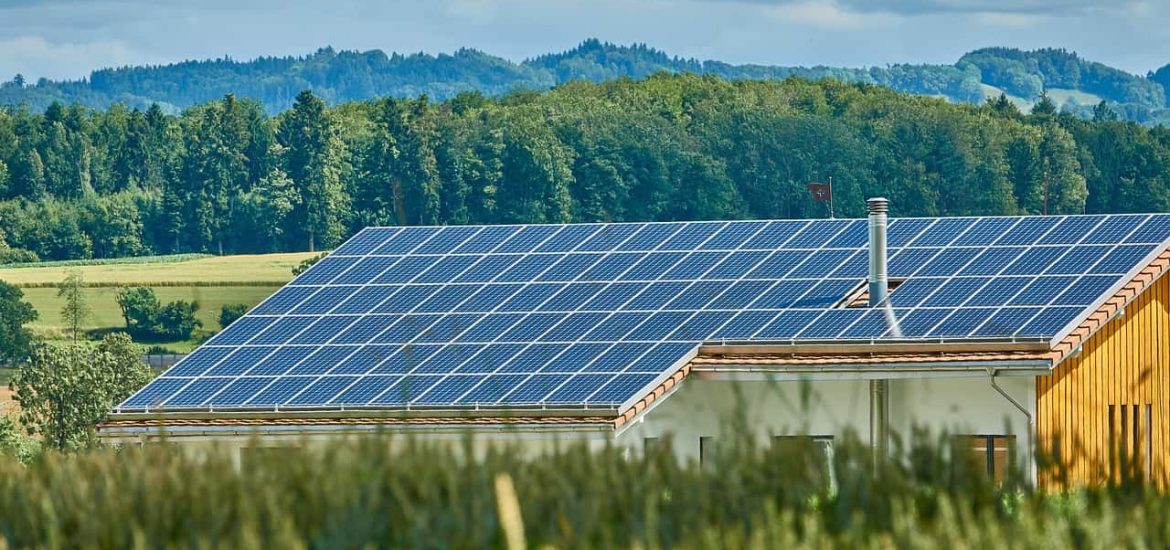The agricultural sector is a significant polluter, requiring technological advancement to enhance sustainability.

Solar energy and agriculture can benefit from one another
Various industries are searching for emission reduction tactics as eco-consumer rates in the United States rise. The agricultural sector is a significant polluter, requiring technological advancement to enhance sustainability. Environmentalists are exploring the cross benefits of using solar power to support farming.
The connection between renewables and agriculture also supports President Joe Biden’s Build Back Better plan. His administration hopes to achieve national carbon-neutrality levels by 2040 using clean electricity. When farmers install solar panels, they can increase food production and power the emission-free electric grid.
Currently, 80% of America’s energy supply comes from fossil fuels. During the combustion process, the elements release greenhouse gases into the environment.
These gases alter the atmosphere’s composition. The planet relies on a strategic atmospheric consistency to produce and regulate specific surface temperatures supporting the global ecosystem. As the composition changes, Earth struggles to maintain life-sufficient conditions.
Naturally, Earth absorbs infrared radiation and produces heat, warming its surface. Then, the atmosphere gathers extra energy and sends it to space. Greenhouse gases change the process by raising the atmospheric sunlight-to-heat conversion rate.
Emissions also trap excess energy on Earth, refiltering it through the heat production process. Over time, the gases increase the planet’s temperature. Solar power decreases these adverse effects by producing an abundant energy supply without releasing emissions.
Another contributing factor to the enhanced greenhouse effect is agricultural processes. Raising cattle increases the rate of methane emissions polluting the atmosphere. Methane is a more potent air pollutant than carbon dioxide.
The farming industry also affects Earth’s ecology by exploiting natural lands and resources. The overproduction of crops uses excessive quantities of water, erodes soil and depletes the ground’s nutrient levels. Covering regions of farms and water sources with solar panels can increase clean energy production and support land conservation for agricultural development.
Covering low-light plants
Farmers struggle to produce many light- and heat-intolerant crops as the global temperature increases. High-demand vegetables like tomatoes, broccoli, leaf lettuce, spinach, squash and more require shade to reach optimal growth cycles. Farmers can utilize solar panels to shade their low-light plants, increasing the abundance of their yields.
Environmentalists coined the term agrivoltaics, signifying farming processes using solar panels. The panels protect the crops from light-related damage, as the plants cool off the solar systems when they perspire. Renewable devices decrease in efficiency when they overheat so low-light crops can preserve their production rates.
Floatovoltaic-covered canals
The agricultural industry is also using solar panels to conserve necessary natural resources. Farming requires vast quantities of fresh water. The evaporation rate follows as the global temperature rises, leaving regions in extended droughts.
Environmental engineers and scientists developed a sustainable solution by placing panels over canals. Agricultural professionals plan on installing solar systems over the water sources supporting California’s farms. Researchers predict the project may save nearly 65 billion gallons of water annually by reducing evaporation effects.
Other engineers developed photovoltaic (PV) panels that float, helping protect all water sources from the effects of climate change. PV technology works by converting solar radiation into a direct current of emission-free electricity. Because the panels float on water surfaces, professionals named them floatovoltaic systems.
The floatovoltaic panels can increase the national clean energy supply and the abundance of fresh water for agricultural development. Together, the industries can minimize harmful ecological effects and improve resource conservation efforts.
The enhanced greenhouse effect also limits agricultural production due to animals overheating. Grazing livestock like cattle and sheep require shade when temperatures rise. Farmers can utilize solar panels in their fields to provide their animals with sufficient shelter.
Production limitations
While solar panels seem simple to support agricultural production, many farmers resist adopting the technology. Many agricultural professionals can’t see the benefits of placing systems on their open fields. They believe the panels take up too much land and limit production rates.
Other professionals in rural areas view solar as a political statement. Researchers found that fewer Republican citizens support renewable energy systems because they fail to recognize their environmental values.
The US can support the cross between solar and agricultural production by creating effective educational programs. When individuals better understand the benefits, they may feel compelled to adopt the system. The program can highlight the financial advantages of using solar power on farms.
Solar is the most affordable energy source in the country, helping farmers minimize their utility costs. Agricultural professionals can also sell excess clean electricity to the grid and develop a form of passive income. Farmers may additionally support their livestock’s health by strengthening local air quality with renewables.
Finally, people can teach farmers about the production benefits of using panels to increase shade in their fields. While the transition may take time, it can effectively improve crop yields and decrease atmospheric degradation.
When farmers are ready to shrink their carbon footprints and utility bills, they can purchase and install solar panels. Agricultural professionals can apply for the solar investment tax credit (ITC) to financially support their purchases, minimizing initial costs. They may also locate a manufacturer specializing in agricultural installations to increase the efficiency and longevity of their systems.








